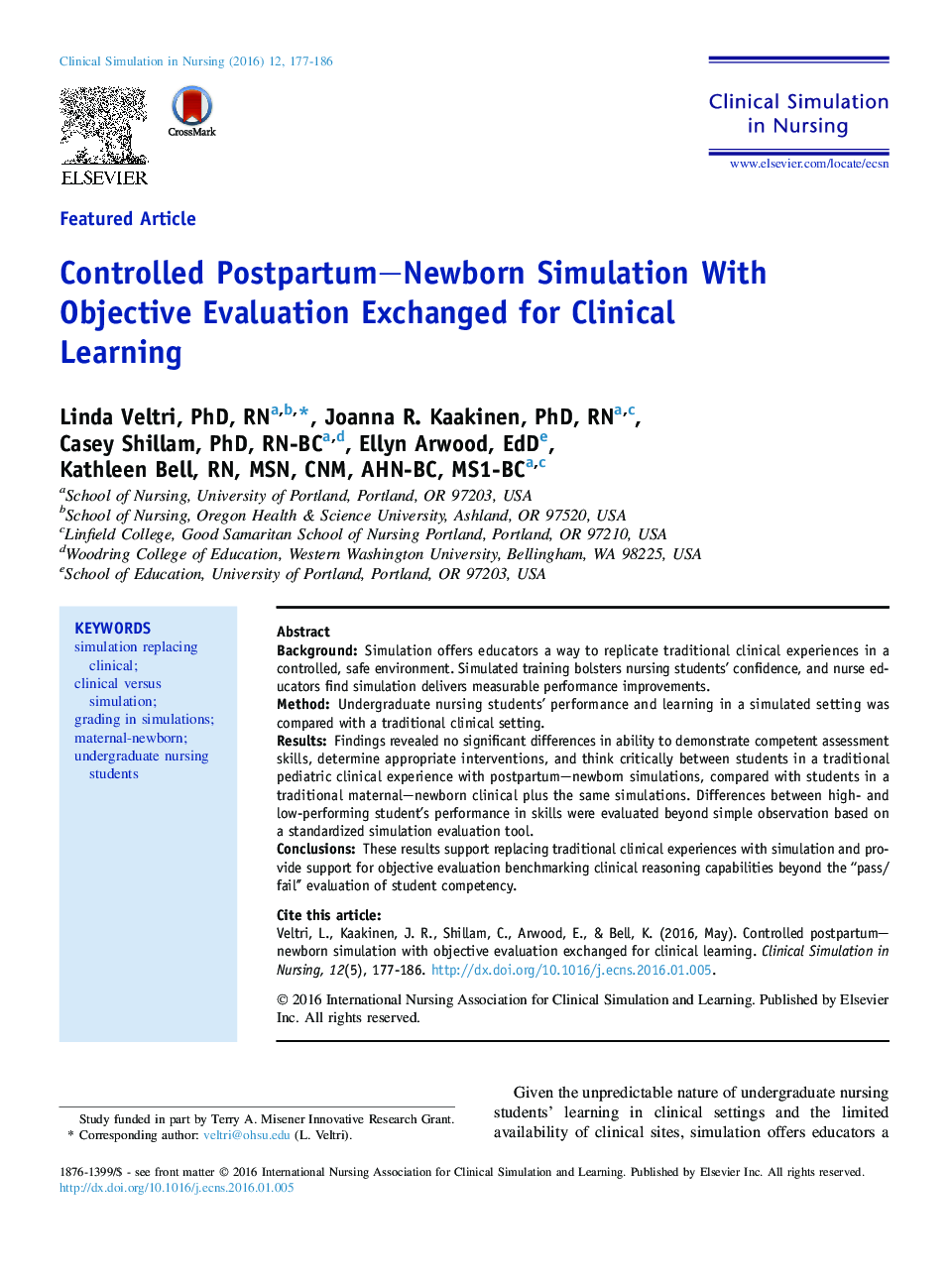| کد مقاله | کد نشریه | سال انتشار | مقاله انگلیسی | نسخه تمام متن |
|---|---|---|---|---|
| 2645905 | 1138793 | 2016 | 10 صفحه PDF | دانلود رایگان |
• No significant difference found between simulation plus clinical and simulation only group(s).
• Findings support difference of high-/low-performing students' ability to assess, intervene, and think critically.
• Study findings demonstrate that simulation can evaluate quality of student performance.
BackgroundSimulation offers educators a way to replicate traditional clinical experiences in a controlled, safe environment. Simulated training bolsters nursing students' confidence, and nurse educators find simulation delivers measurable performance improvements.MethodUndergraduate nursing students' performance and learning in a simulated setting was compared with a traditional clinical setting.ResultsFindings revealed no significant differences in ability to demonstrate competent assessment skills, determine appropriate interventions, and think critically between students in a traditional pediatric clinical experience with postpartum–newborn simulations, compared with students in a traditional maternal–newborn clinical plus the same simulations. Differences between high- and low-performing student's performance in skills were evaluated beyond simple observation based on a standardized simulation evaluation tool.ConclusionsThese results support replacing traditional clinical experiences with simulation and provide support for objective evaluation benchmarking clinical reasoning capabilities beyond the “pass/fail” evaluation of student competency.
Journal: Clinical Simulation in Nursing - Volume 12, Issue 5, May 2016, Pages 177–186
